Garden pumpkins come in numerous varieties. The edible pumpkins provide healthy, digestible and tasty pulp. There are numerous recipes for using pumpkin meat in the kitchen. But the large number of seeds inside the pumpkin fruit can also be used for culinary purposes.
What you should know about the garden pumpkin

The pumpkin is one of the fruit fruits. From a botanical point of view, the pumpkin fruit is assigned to the berries. Even if pumpkins can get huge and their outer skin is very firm: The pumpkin seeds are exposed in the pulp. Pumpkins thus meet the requirement for classification as a berry.
It is estimated that around 800 different species belong to the cucurbita family worldwide. Pumpkins can be round, oblong, large, or small. There are bottle-shaped pumpkins and fruits that look like a UFO. The surface of the outer skin can be smooth or covered with warty growths. The color spectrum for pumpkins ranges from bright yellow and orange, different shades of green to a light outer skin. In addition to single-colored pumpkin skins, there are also interesting striped types. The pumpkin is one of the oldest fruits that enrich people's menus. It has been cultivated for about 10,000 years.
The origins of the useful crop lie in South America and Africa. In addition to the South American pumpkins, bottle gourds have been around in Africa for thousands of years. These are dried, hollowed out and used as storage vessels. The Portuguese brought various types of the pumpkin from their expeditions from South America across the ocean to Europe. Today, five main types of pumpkins are cultivated in Australia, Africa, America and Europe. These include the garden pumpkin (Curcurbita pepo), the fig-leaf pumpkin (Cucurbita ficifolia), the musk pumpkin (Curcubita moschata), the giant pumpkin (Curcubita maxima) and Curcubita argyrosperma, which is mainly grown in South America.
The garden pumpkin is the most important representative of the pumpkin family in Europe. The well-known orange-colored Halloween pumpkins, the yellow hundredweight or the Styrian oil pumpkin are among the garden pumpkins. Zucchini also belong to this pumpkin family. Spaghetti pumpkins are also grown, the pulp of which breaks down into spaghetti-like threads after cooking.
The garden pumpkin is an annual plant that forms meter-long stems on which the pumpkin fruits grow. There are climbing varieties, but the stems often lie on the ground because of the weight of the fruit. The pumpkin seeds are the seeds that are either sown directly in a bed in spring or from which small pumpkin plants are grown. Pumpkin is very sensitive to cold. Therefore, garden pumpkins should only be planted in the bed after the ice saints. The pumpkin plants form bright or yellow flowers that are shaped like a bell. The plants need to be well watered regularly.
The garden pumpkin needs deep and nutrient-rich soil so that it can develop numerous fruits. The harvest begins, depending on the variety, from the end of August and extends until the first autumn frosts. Some varieties of the garden pumpkin are good as autumn decorations. In culinary terms, for example, pumpkin meat is preserved together with spices, processed into soups or cooked in the oven as a side dish. The kernels of the Styrian oil pumpkins are roasted and pressed. The deep green and thick oil is extremely healthy and, with its nutty taste, goes well with many dishes.
Importance to health
The pumpkin fruit is ideal for particularly wholesome light food dishes. The garden pumpkin can be made into puree and, like carrots, used as a first complementary food to feed small children. In addition to the relieving effect on the digestive system, the garden pumpkin has a pronounced dehydrating effect after consumption.
It can be used specifically as a diuretic food for kidney diseases, which at the same time relieves the cardiovascular system. Pumpkin seeds are a proven folk medicine for benign prostate enlargement. Even with a constant urge to urinate without an infection by pathogens, regular consumption of pumpkin seeds can soothe the irritated bladder. The kernels also contain curcubitin. This ingredient works against worms in the digestive tract. However, at least 200 grams of pumpkin seeds would have to be consumed per intake.
Ingredients & nutritional values
The pulp of a garden pumpkin contains numerous vitamins such as A and C as well as the group of B vitamins. The pumpkin fruit also provides minerals such as potassium, iron and calcium. The secondary plant substances are also very important for health.
Particularly noteworthy are the carotenoids, which give the pumpkin its often very intense color. Secondary plant substances act against free radicals in the organism, which favor the development of tumor diseases. Pumpkin meat is low in calories because it is 95 percent water. One hundred grams of pumpkin provide only 21 kcal.
Intolerances & allergies
Unwanted reactions after eating pure pumpkin meat are not known even in people with severe allergies. Preparations that contain special spices or other additives can always present a risk of allergies, but this does not come from the pumpkin.
Shopping & kitchen tips
When harvesting garden pumpkins, care must be taken to leave a piece of the stem on the ripe fruit. The skin of the fruit must be completely undamaged if the pumpkins are to be stored. The pumpkins can be stored in a cool, dry place for several months.
It is also possible to freeze the pumpkin meat. To do this, it must be cut into small pieces and put in boiling water for two minutes. After cooling, the pieces can be wrapped and placed in the freezer. Another option is to process the pumpkin meat into puree and freeze it in portions. Each variety has a special aroma, it is worth trying different pumpkins. The butternut pumpkin tastes slightly sweet, the squash pumpkin, which is reminiscent of a UFO, has a subtle nutmeg taste.
Anyone who arranges autumn decorations on the doorstep should make sure that the fruits are protected from frost. The garden pumpkins can later be used in the kitchen. Small and tender fruits can be braised whole. The shell can also be eaten with the bright orange Hokkaido pumpkin. Large specimens of pumpkins are hollowed out. The coarse shells of the huge fruits are not suitable for consumption.
Preparation tips
In addition to pumpkin soup and pumpkin compote, there are even more ways to process the pumpkin meat. Pumpkin can be cooked to make sweet jams, young pumpkins can be used raw as an addition to salads.Pumpkin can serve as a filling in dumplings, pumpkin cubes are tasty in risotto and steamed pumpkin wedges are ideal as a side dish with cheese gratin for vegetarian dishes or meat dishes.
Pumpkin soups can always be changed in taste by adding spices. In addition to salt and pepper, curry, coriander, nutmeg and cream or coconut milk are particularly suitable for seasoning. Not only pumpkin dishes win when they are refined with roasted pumpkin seeds and a few drops of pumpkin seed oil.

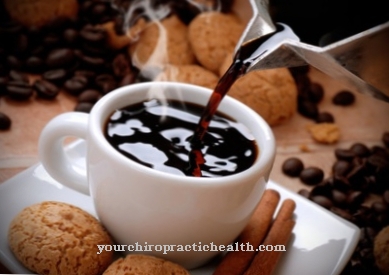

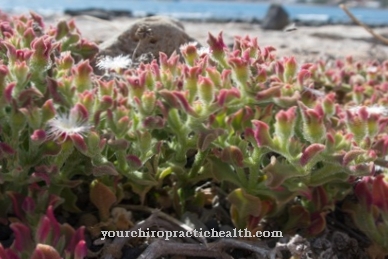
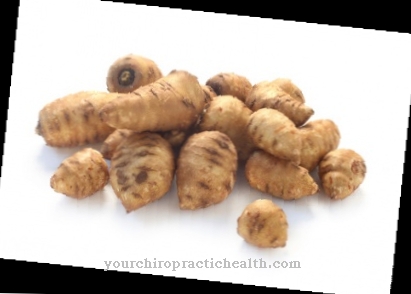
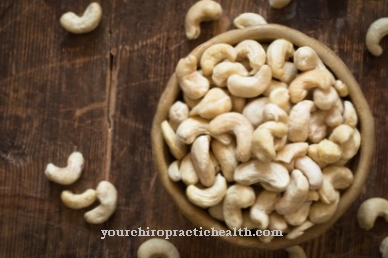
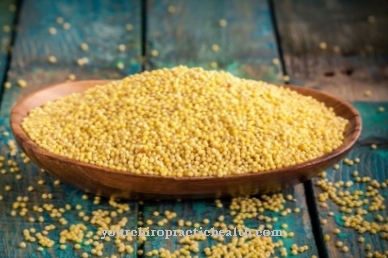


















.jpg)

.jpg)
